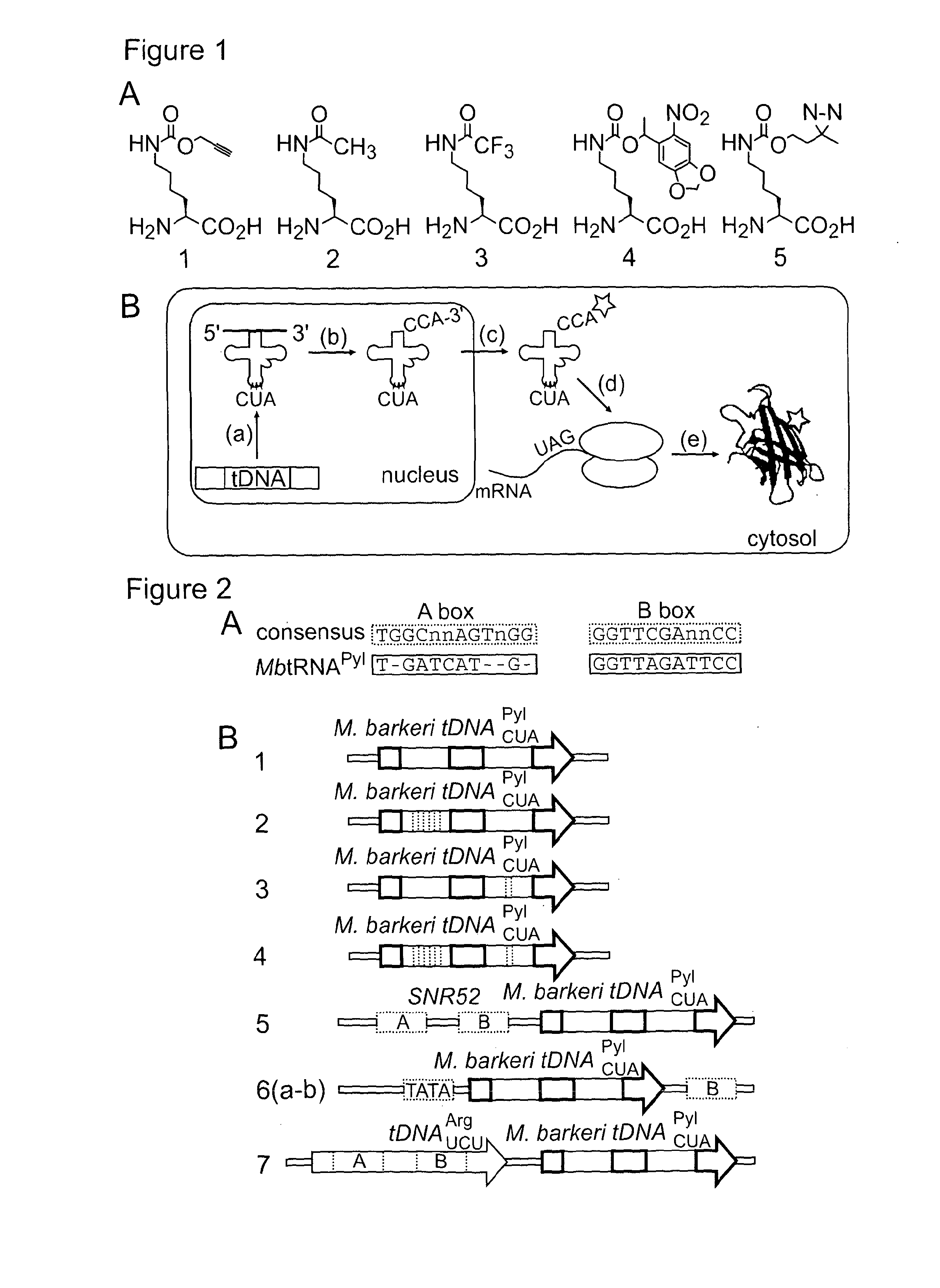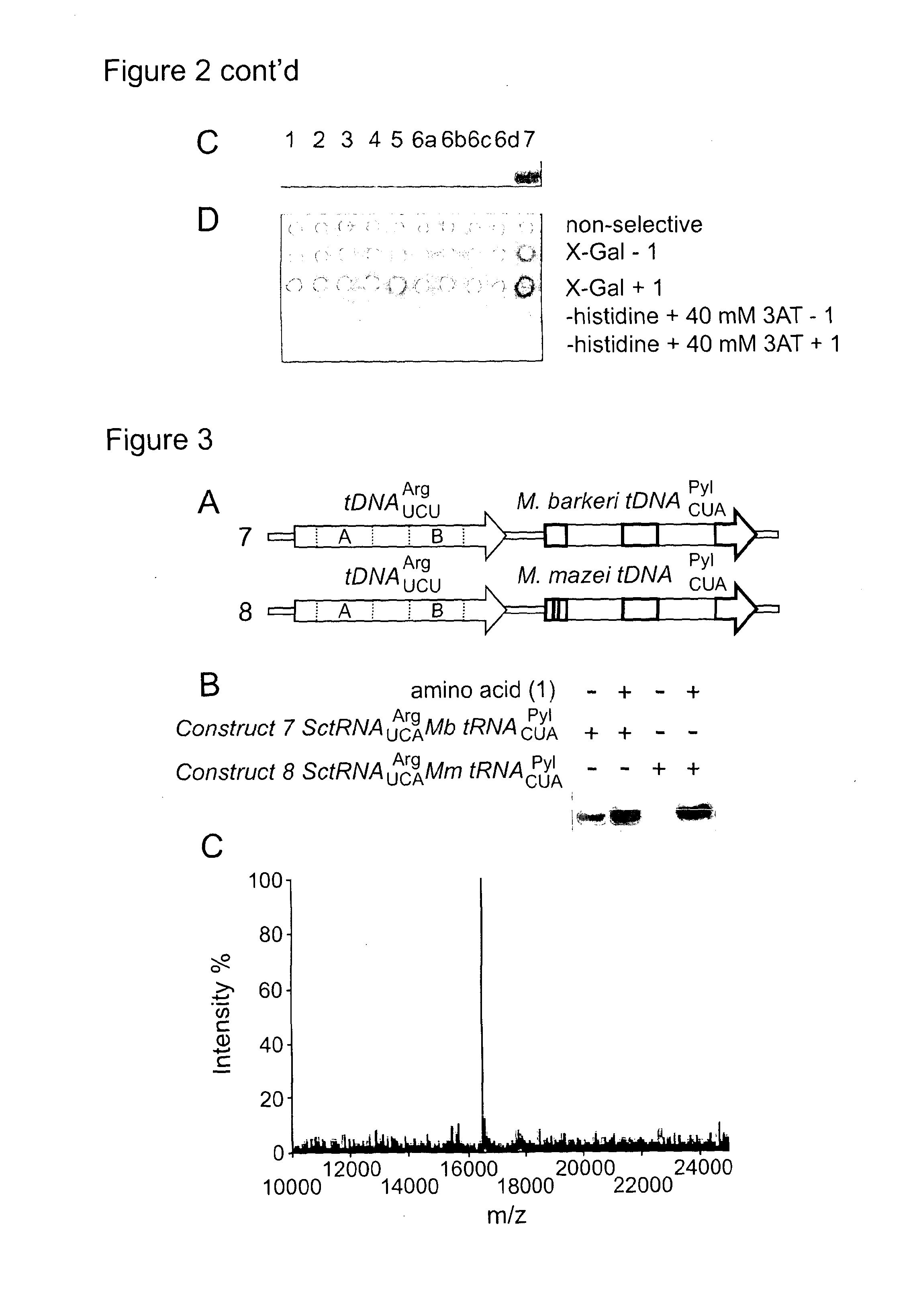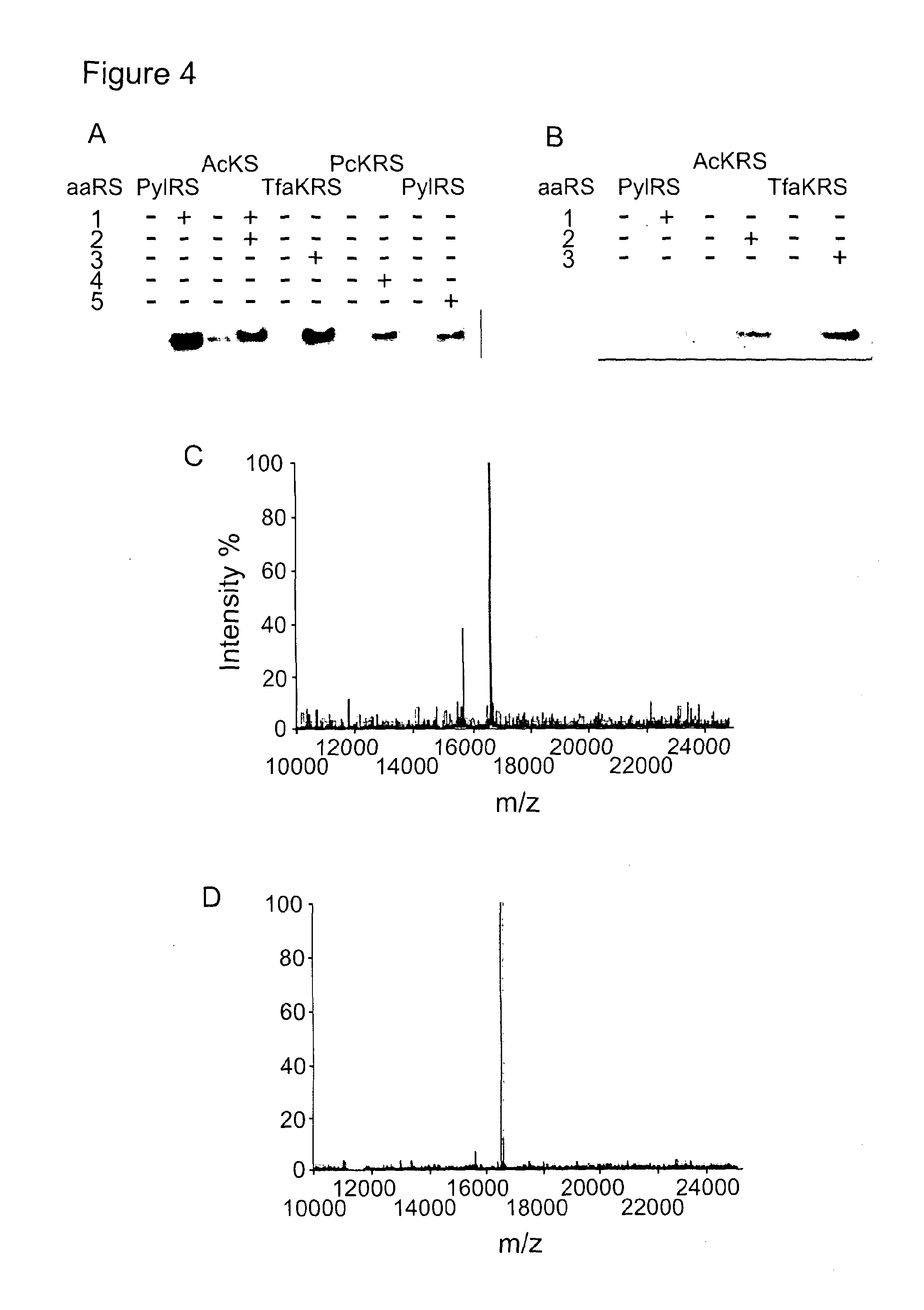Methods for Incorporating Unnatural Amino Acids in Eukaryotic Cells
a technology of eukaryotic cells and amino acids, applied in the field of methods for incorporating unnatural amino acids in eukaryotic cells, can solve the problem of limited scope of unnatural amino acids that have been incorporated in yeas
- Summary
- Abstract
- Description
- Claims
- Application Information
AI Technical Summary
Benefits of technology
Problems solved by technology
Method used
Image
Examples
example 1
Wild Type MbPylRS / tRNACUAPyl in Yeast Cells
[0139]We replaced the functional EcTyrRS / tRNACUATyr pair with the MbPylRS / MbtRNACUAPyl pair (FIG. 2B, construct 1) and supplemented with Nε-[(2-propynyloxy)carbonyl]-L-lysine (1) (FIG. 1A, a known substrate for MbPylRS5) in MaV203:pGADGAL4(2TAG). These cells were unable to grow in media lacking histidine and did not turn blue in the presence of X-Gal, suggesting that this original construct is not functional (FIG. 2D). We demonstrated by western blot that the yeast codon-optimized MbPylRS was expressed in the cells (data not shown). However analysis of northern blots indicated that MbtRNACUAPyl was not transcribed from our initial construct (FIG. 2C). Since the EctRNACUATyr gene contains the consensus A and B box RNA polymerase III promoter sequences that direct its transcription in yeast,11 but MbtRNACUAPyl does not (FIG. 2A), it seemed likely that additional promoter elements would be required to direct the transcription of MbtRNACUAPyl.
example 2
Promoter Elements Combined with Wild-Type MbPylRS / tRNACUAPyl in Yeast Cells
[0140]To address the challenge of creating new promoter elements to direct the transcription of MbtRNACUAPyl, we investigated strategies to introduce A and B box sequences into our tRNA expression construct. We first mutated the sequence of the MbtRNACUAPyl gene to contain either near-consensus A box sequences (A11C / U15G / T24G, FIG. 2B construct 2) or B box sequences (A56C, FIG. 2B construct 3). Northern blot analysis demonstrated that the A56C mutation in the B box, led to very low but detectable levels of the mutant MbtRNACUAPyl (Supplementary FIG. 1), while expression of the (A11C / U15G / T24G) mutant tRNA was not detectable by northern blot. However when the A56C mutant of MbtRNACUAPyl and MbPylRS were transferred to MaV203:pGADGAL4(2TAG) in the presence of 1 we did not observe phenotypes consistent with amber suppression (FIG. 2D). This implies that either the tRNA is transcribed but not correctly folded or ...
example 3
tDNAUCUArg as Promoter in Yeast Cells
[0143]We constructed a SctDNAUCUArg-MbtDNACUAPyl cassette containing the natural 5′-, 3 and 10 base pair linker sequences (FIG. 2B, construct 7). Northern blot analysis revealed that MbtRNACUAPyl was transcribed from this construct much more efficiently than any other construct tested (FIG. 2C). When transformed into MaV203:pGADGAL4(2TAG) in the presence of MbPylRS and 1, the SctDNAUCUArg-MbtDNACUAPyl cassette conferred survival on media lacking histidine and containing 40 mM 3AT, and produced the strongest blue color of any construct tested when incubated with X-Gal (FIG. 2D).
[0144]The tRNA constructs we discovered that are both transcribed, as judged by northern blot, and functional, as judged by phenotyping (constructs 5 and 7), showed amber suppression phenotypes even in the absence of added amino acid 1: construct 5 is blue on X-Gal in the presence and absence of 1, and construct 7 is blue in the presence and absence of 1 and grows on media ...
PUM
 Login to View More
Login to View More Abstract
Description
Claims
Application Information
 Login to View More
Login to View More - R&D
- Intellectual Property
- Life Sciences
- Materials
- Tech Scout
- Unparalleled Data Quality
- Higher Quality Content
- 60% Fewer Hallucinations
Browse by: Latest US Patents, China's latest patents, Technical Efficacy Thesaurus, Application Domain, Technology Topic, Popular Technical Reports.
© 2025 PatSnap. All rights reserved.Legal|Privacy policy|Modern Slavery Act Transparency Statement|Sitemap|About US| Contact US: help@patsnap.com



